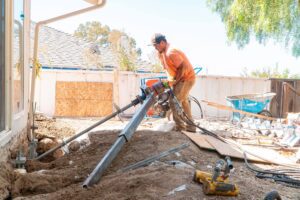Let’s be honest, if you haven’t dealt with a foundation problem or if you are not in the foundation repair or deep foundation pile industry, you probably haven’t heard of a Helical Pier or Pile. Don’t worry, you aren’t alone. Just like we don’t know what flux capacitor is used when creating a computer processor, we don’t expect you to know everything about helical piers, but that will change as you read through this article!
Helical piers are not necessarily a new fad or product when it comes to utilizing them for a deep pile foundation system. Alexander Mitchell was the creator of the first helical pile and they were first utilized on the Maplin Sands Lighthouse located in England in the 1830’s. Since their inception, helical pile systems have been utilized in a variety of ways. From bridges, to traffic lights, to your home’s foundation, helical piles can be utilized in a variety of ways. That is what makes them such a unique product within the foundation repair industry and the commercial deep pile industry.
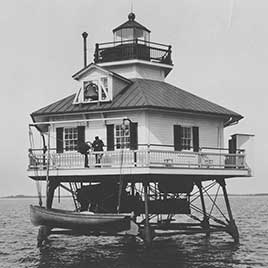
Now that you’ve had your history lesson for the day, we can get started on how helical piers, piles, and anchors are utilized on your home’s foundation repair project.
A helical foundation system is made up of a few key pieces. The first piece is the lead section. The lead section of a helical system will have a single or combination of plates or helixes attached to a square or round pipe piece. These helixes are what will be utilized to penetrate into the soils and will supply the helical to generate it’s capacity at numerous depths specific to the soil conditions that are present. The more and larger the helixes plates that are on the lead section, the lower the installation depth that is required to generate the required capacity of the helical. Smaller and fewer helixes result in typically a deeper installation depth than those with larger flights. For most of the soil conditions in Southern California and Arizona, we utilize an 8/10 lead configuration. That is where the first flight on the helical lead is 8″ in diameter and the second is 10″.
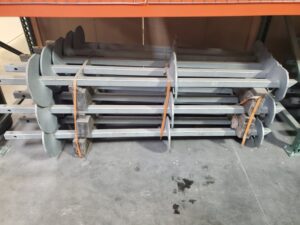
The next key component is the extensions that will attach to the lead sections to continue the helical system’s installation to the required depths and torques. These extensions can range in a variety of lengths. The most commonly used lengths are 3′, 5′, 7′, 10′, and 20′. Extensions are continuously installed until the required depth and torques are achieved. We have installed helical systems from 7′ to 200′, but on average the installation depth for a project in our service areas is around 21′.
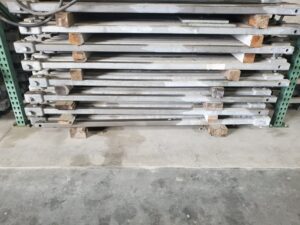
The differences between a helical pier, helical pile, and a helical anchor are just in regards to how they are used.
Helical Piers Versus Helical Piles
What Are Helical Piers?
Helical piers can be utilized for vertical loading and they will utilize a retrofit bracket that is installed to a home or structure’s foundation. These piers are installed by utilizing a hydraulic drive head to spin or screw the helicals into the soils. Once the helicals have been installed to the required depths and torques the excess shaft is cut to allow for the bracket to properly be mounted to both the helical and to the home or structure’s foundation. The loads of the home or structure is then transferred to the helical pier. Once this has occurred you can then backfill the locations and put back any previously removed landscaping.
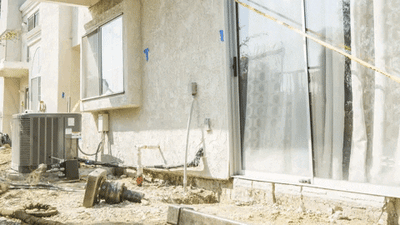
What Are Helical Piles?
Helical piles are utilized for new construction applications. These helical piles are spaced out within the excavated trench for a new footing to be poured. The helicals are installed within the trench and are terminated once the required depth and torques are achieved. The helical shaft is then cut to be height, typically 4″-6″ off of the bottom of the excavation and a new construction pile cap is installed. This cap is then incorporated into the rebar cage for the new footing and the footing is then poured. Installing new construction helical piles is a great way to ensure that the new structure is built on a solid foundation. The loads of the new structure are transferred to the helical piles that were installed prior to the concrete being poured and ensuring that the loads of the structure is supported and won’t experience any settlement or upheave in the future.
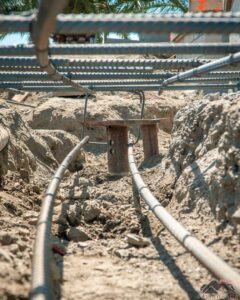
What Are Helical Anchors?
Helical Anchors are designed and installed when the threat of any lateral loads are present prior to construction of a new build or to an existing structure. Helical anchors or tiebacks, are installed between 20-30 degrees from horizontal. They are installed to required depths and torques and then can have a variety of termination adapters attached depending on what the application requires. It can range from a guy wire anchor of attaching a cable to such things as the tall telephone poles you see along the roadway, to a threaded bar adapter for existing retaining walls that require lateral support, to the same new construction caps that the helical piles use for any new construction helical anchoring that may be needed.
